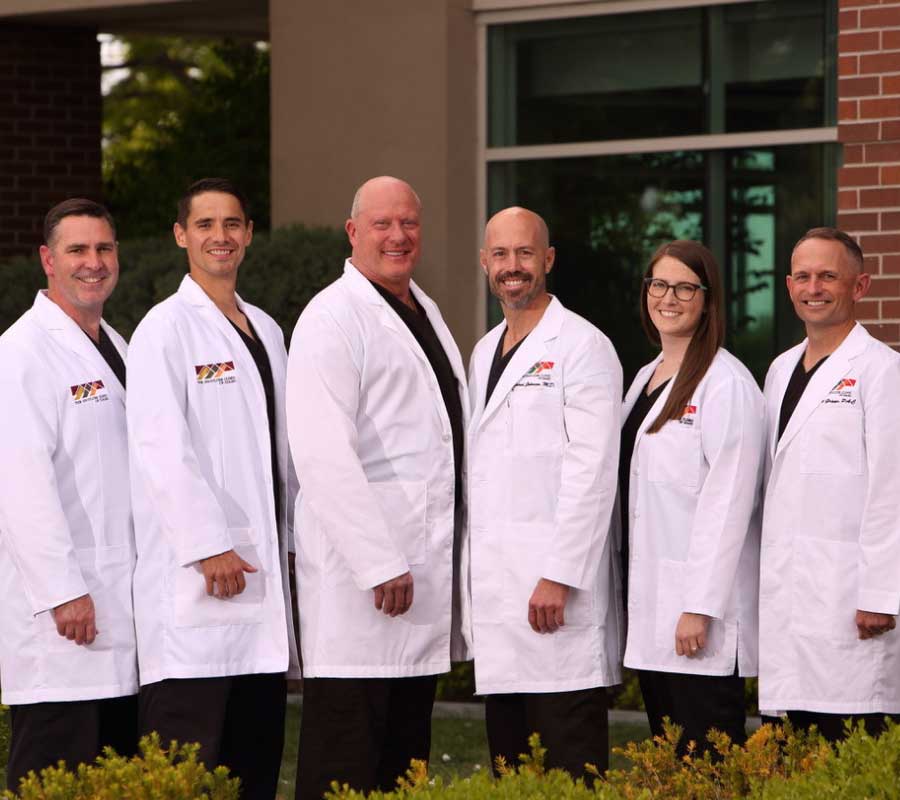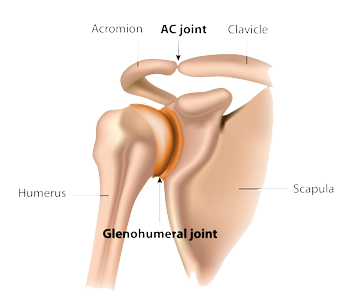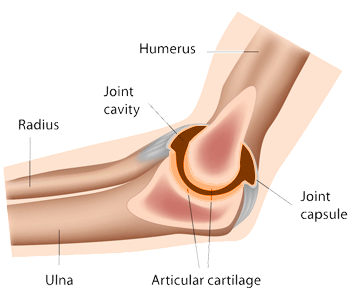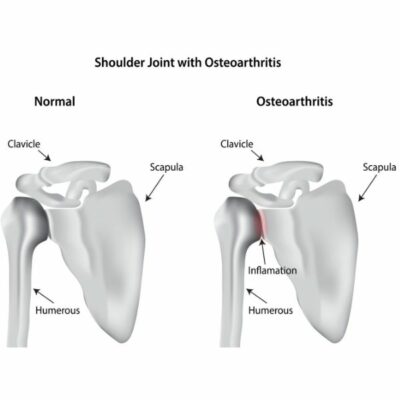Shoulder Joint Preservation Surgeons

Are you experiencing pain in your shoulder due to osteoarthritis? If you are trying to delay a shoulder replacement, there are a number of joint preservation surgeries to help alleviate shoulder pain and delay a shoulder replacement. The shoulder joint preservation surgeons at Shoulder Clinic of Idaho provide diagnosis and both surgical and nonsurgical treatment options for patients in the Boise area who have developed shoulder osteoarthritis. Contact the Shoulder Clinic of Idaho team today!
What is Joint Preservation?
Joint preservation is specialized treatment option for patients who have osteoarthritis and degenerative conditions in the shoulder. These debilitating type of conditions can present with arthritis, cartilage damage, degenerative labral tears, shoulder synovitis, and fraying of the tendons and ligaments of the shoulder. Some of these conditions can occur in the shoulder as a result of an injury or as a result of the natural aging and degenerative process of the shoulder. Also called “wear-and-tear” arthritis, osteoarthritis can wear away the once smooth cartilage surface of the shoulder socket.
This creates roughness and catching in the shoulder joint and, when severe, can progress to the point where there is “bone-on-bone” rubbing. This occurs when the cartilage has worn sufficiently on both the humerus (ball) side and glenoid (socket) side such that bone is exposed on both sides of the shoulder joint. This condition can cause significant roughness in the shoulder, also known as shoulder crepitus. It also can cause significant shoulder pain and shoulder stiffness. Biologic and chemical changes within the joint due to osteoarthritis and some degenerative conditions are non-reversible. The orthopedic shoulder specialists at The Shoulder Clinic of Idaho offer patients in Boise, Meridian, Nampa, and the surrounding communities of the Treasure Valley joint preservation treatments as an alternative to shoulder replacement surgery. Joint preservation and cartilage restoration procedures allow patients to return to activities more quickly.
What is arthritis in the shoulder?
In the state of Idaho, the Center for Disease Control has reported that one-in-four women and one-in-five men will have arthritis in their lifetime. Arthritis in the shoulder is a degenerative condition of the joints, creating pain, swelling and limited movement. There are two joints that may be affected by arthritis in the shoulder. One joint is located where the clavicle meets the tip of the acromion (shoulder blade) and is called the AC joint. The second shoulder joint susceptible to arthritis is called the glenohumeral joint, where the head of the humerus (arm bone) fits into the glenoid (socket) of the scapula (shoulder blade). To provide patients with effective treatment, the orthopedic shoulder specialists at The Shoulder Clinic of Idaho will need to determine which joint is affected, what type of arthritis has developed, and what other degenerative conditions of the shoulder may be contributing to a patient’s loss of shoulder comfort and function.
What kinds of arthritis are found in the shoulder?
Osteoarthritis is notably one of the most debilitating forms of arthritis and is characterized by the deterioration of articular cartilage accompanied by changes in the bone and soft tissue of the joint. Articular cartilage functions to absorb shock and reduce friction during movement. As the cartilage wears away, it becomes frayed and rough, and the protective space that exists between the bones and joint surfaces decreases. During movement, the bones of the shoulder joint may rub against each other causing pain, popping, and a sense of shoulder roughness.
Post-traumatic arthritis is another form of shoulder arthritis caused by an injury or dislocation. Shoulder injuries are common, due to the joint’s inherent instability. Injuries such as shoulder dislocations, shoulder separations or shoulder fractures can lead to post-traumatic arthritis in the shoulder.
Rheumatoid arthritis is an autoimmune condition that affects the joint lining and can cause joint swelling. Over time, Rheumatoid arthritis can cause the erosion of the bones in the shoulder, causing deformity of the shoulder joints. This type of arthritis is an inflammatory arthritis and may present differently that the typical degenerative arthritis or osteoarthritis which is most common.
What are joint preservation treatments?
The goal of joint preservation is to delay the onset or progression of degenerative conditions of the shoulder. Surgical intervention for shoulder arthritis and other degenerative shoulder conditions has historically been limited to joint replacement. However, patients in Boise, Meridian, Nampa, and the surrounding communities of the Treasure Valley, that would like to delay shoulder replacement surgery can chose joint preservation. Here are a few treatments offered by The Shoulder Clinic of Idaho that may be done alone, or together, to preserve the shoulder joint and delay the need for shoulder replacement surgery:
- Debridement with capsular release – Mild arthritis in the glenohumeral joint can be treated with minimally invasive surgery using small incisions and a small camera placed inside the joint. Orthopedic shoulder specialists remove loose pieces of cartilage and “clean up” the joint. The surgery also usually includes a release of the capsule as well as removal of the joint lining, which is often inflamed, causing pain. This procedure is best reserved for patients with mechanical catching in the shoulder and associated shoulder stiffness in the presence of mild shoulder arthritis.
- Microfracture – A surgical procedure that involves making tiny holes in the bone that will “bleed” and release healing elements in the area of cartilage loss. These healing elements that exist in blood and deeper parts of the bone help fill the cartilage defect with a new type of tissue that behaves like cartilage.
What happens after shoulder joint preservation?
After joint preservation surgery, patients can expect to wear a sling and begin shoulder exercises the day after their surgery. The orthopedic shoulder surgeons at The Shoulder Clinic of Idaho will prescribe and individualized a physical therapy program that will help restore shoulder motion and increase strength. Physical therapy, either done with the aid of physical therapist or on one’s own, is important following surgery to help the shoulder joint heal; and it can aid in shoulder stability and shoulder strength. Eventually, patients will return to their regular activities with a progressive return of full shoulder function.
If you are looking for an alternative to shoulder joint replacement and would like more information about joint preservation, please contact The Shoulder Clinic of Idaho, serving Boise, Meridian, Nampa, and the surrounding communities of the Treasure Valley.



